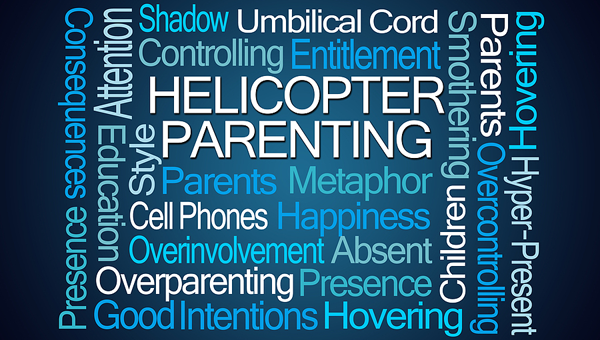Designing an effective school website for your target audience, parents and students, can be confusing and even stressful. So, let’s explore some of the points one should consider in order to find the information that will lead to the website that parents and students will visit often.
Know your target audience
First, who is your target audience? And does that audience change from grade level to grade level? And even if it does, how important is it, really, to design a website specific to that audience?

Elementary Schools
Elementary schools, with students from kindergarten to sixth grade, have a varied audience. Kindergarten students may not be logging on to your school website from their home computer, but their parents will visit the website frequently—if you’ve included the information they’re seeking. And if you’ve made the information easy to find. And if you’ve kept that information current and accurate.
And by the time that child is in the third through the fifth-grade year, he, along with his parents, will search for information on the school website. Kids that age will use the website to search
- what’s for lunch; and
- to find links to the teacher’s website or helpful education websites.
Middle Schools
Now you must take into account that your audience includes computer savvy kids and their parents using your school website to find what they need almost daily.
They still want to find information such as links to the lunch menu and classroom websites, but now, they also want to find out when the upcoming dance, track meet, or special student activity will take place. In this very social climate, also want to see photos of themselves and their friends (and for parents, their own middle school kids and their friends’ middle school kids) enjoying a great experience as they grow and learn at your school.
There is no clearcut data that says this year is when a child begins to take their education seriously, but experience tells us that as they move toward becoming more independent, responsible educators, such as you, can add to their independent development by providing the right tools that will allow them to build on their growth.
Giving middle school students an age-specific online home to help further their education is a great start. More about the data later.

High Schools
During the high school years, your main audience is the students themselves. Many parents are still actively involved in school activities throughout the year, but by this time, many parents should have backed away from diligently monitoring their child’s education and should be visiting the school site less often.
High school students search the school website to find the answers to millions of questions. Yes, they may still want to find that lunch menu, but now they want to find
- the activities calendar;
- the athletics schedules;
- teacher and classroom website information;
- staff contact information;
- graduation requirements;
- college application information;
- NCAA sports information;
- what clubs are available and when they meet; and
- the list goes on.
Be sure to add lots of great photos. They still want to see pictures of themselves and their friends having fun as they pursue the all-important high school education.
And one more thing: Be sure your search bar is easy to find and functioning well on your website. Parents and students will use it regularly to find the information they’re looking for.
What does the data tell us?
Many studies have been conducted, and the data clearly shows that there is a correlation between parent involvement and student success, both academically and socially (see Parent Involvement and Children’s Academic and Social Development in Elementary School). Most of the studies involve data regarding parental participation in things such as parent-teacher meetings, helping with homework, and attending school events.
Reason infers that the best way for parents to find out what’s happening and to stay current so they can be appropriately involved in their child’s education is by gearing your school website toward their needs.
What else does the data show?
The data showing the impact of parent involvement in the later years of school is sorely lacking since it has received much less attention. But do we really need to spend millions of dollars to find out that it makes a difference then too? Of course, it makes a difference. However, the data does clearly show that too much involvement tends to cross the line into “helicopter parenting.”
So, let’s talk about that for a moment, only because it’s such an interesting topic.

Who are the helicopter parents?
Helicopter parents in the elementary school years
The helicopter parents of elementary school students may go to great lengths to make sure their child gets into a certain school or gets a certain teacher. This parent may not only supervise the child’s homework but may complete their school work and projects for them.
Helicopter parents in the middle school years
The helicopter parents of middle school students might select their child’s activities or their best friend for them. Since they believe they know what’s best for their child, they will not take into account what their child may prefer.
Helicopter parents in the high school years
Helicopter parents of high school students might take on the college or university search, themselves, to find the best school for their child instead of merely supervising the decision or leaving it up to their child. Or they may carefully watch over their child’s shoulder when the student applies to colleges. These parents will contact school authorities such as teachers, principals, deans, or university presidents to request extensions of assignments or to find out why the student didn’t get accepted to his dream school.
What does the data say about helicopter parents?
What does the data say about helicopter parents? What are the pros and cons of this style of parenting?
For a long time, we have accepted the idea that when parents participate and are involved in their child’s education, at home and at school, it is a good thing. Parent involvement is critical to a student’s academic success and social and emotional development. The data tells us that parents who are involved foster kids with positive attitudes at school and at home. Active parenting reduces absenteeism and drop-out rates and enhances academic achievement.
Many studies have produced data that indicates overprotective parents can have negative impacts. A child whose parents involve themselves at developmentally inappropriate levels has been found to have more mental health problems. The data also shows that helicopter parenting can account for the millions of adolescents and young adults who are particularly affected with anxiety, depression, substance abuse issues, fear of failure, low self-esteem, and poor coping skills with day-to-day issues.
What does the information say about developmentally healthy parenting?
Watch your child soar and become healthy and happy by allowing them to appropriately experience the difficulties and struggles of everyday life. You may want to do your own search to gain more information about healthy parenting skills during the various stages of life your child experiences.

Let’s build on that
But I digress. This article is about why and how to build an effective age-specific school website. With everything you’ve read so far, think about the ways your school and your school website can successfully aid in the education (and the appropriate development) of every child who attends your school.
So, think about your school. What does your target audience look like? Got it? Good.
Now what?
With your target audience identified, how do schools build websites that will effectively reach it? How can schools effectively support the millions of students and parents at school and at home who need help navigating through the years they spend diligently seeking a solid education?
Let’s make a list of a few things that must be easy to access as students and parents visit your age-specific website.
Elementary School Websites
- The school calendar
- School news and announcements for upcoming events
- The lunch menu
- Staff contact and classroom website information
- Photos of your school, your students, and school activities
- A quick links section for specific parent information (be sure to include the parental rights information)
Your colors, logo, and design will likely be on the younger or more “whimsical” side, as you gear your website to your younger audience.
Middle School Websites
- The school calendar
- School news and announcements for upcoming events
- The lunch menu
- Staff contact and classroom website information
- Photos of your school, your students, and school activities
- A quick links section for specific parent information (be sure to include the parental rights information)
As you think about your colors and your logo, you’ll want to build a site that appeals to a pre-teen child. This child is growing up but still enjoys the fun and security of being young. Your website design can show a level of maturity without being too mature for their taste.
High School Websites
- The school calendars, including activities, sports, clubs, test dates, etc.
- School news and announcements for upcoming events
- The lunch menu
- Staff contact and classroom website information, which includes class assignments and deadlines
- College and career counseling information
- Sports, activities, and clubs information
- Photos of your school, your students, and school activities
- A quick links section for specific parent information (be sure to include the parental rights information)
You’ll want your colors, logo, and design to appeal to your teenage audience. Make it cool; make it fun; not childish but not too sophisticated (unless that’s your target audience, of course).
Download Our FREE eBook: How to Create an Exceptional School Website
In conclusion
One way schools can add value to millions of homes worldwide is by gearing their websites toward their target audience to support them in the various stages of their lives. When schools select an age-specific website design with age-appropriate content, links, and photos, they support the rights we all value to learn in a safe and appropriate environment.
And just watch your school reap the rewards when you support parent and student needs at home with your school website.
Judy Bittner, Project Management Director, School Webmasters, LLC.








